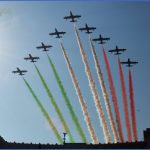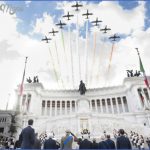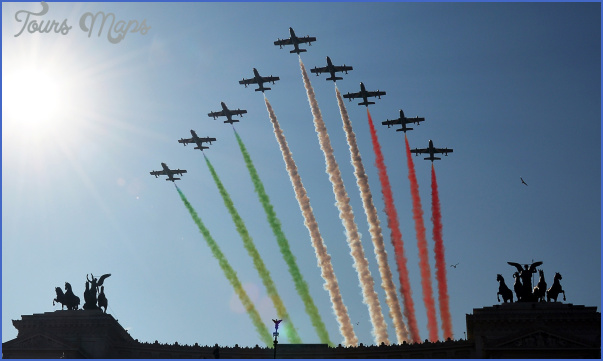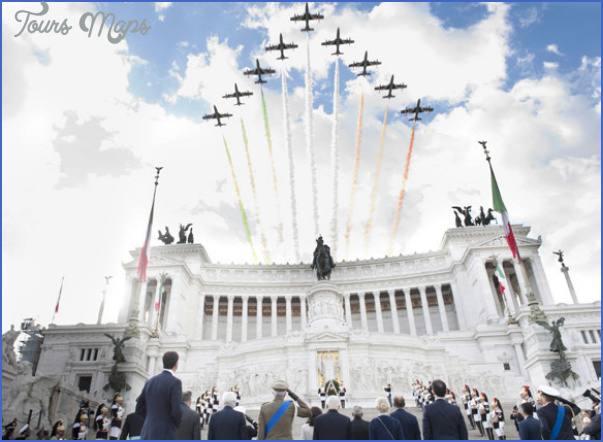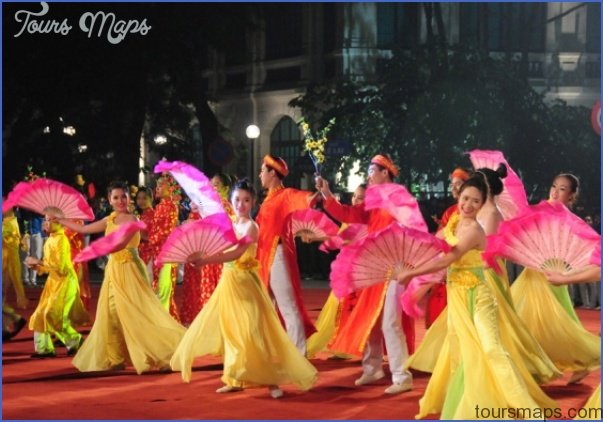NATIONAL UNIFICATION (1851-1867)
During the mid-19th century, European nations, inspired by the survival of the fittest theories of Social Darwinism, consolidated land and power. Taking the lead from his uncle, President Louis Napoleon dissolved the National Assembly and declared himself Emperor Napoleon III. In Italy, the efforts of Victor Emmanuel II and General Giuseppe Garibaldi from 1859 to 1870 managed to unify Italy despite long-standing regional tensions. Meanwhile, back in Prussia, newly appointed Prime Minister Otto von Bismarck unified the German Empire, including the new lands Prussia had garnered as spoils during the Austro-Prus-sian and Franco-Prussian Wars. As massive monarchal alliances became trendy, the Dual Monarchy of Austria-Hungary was created in 1867, the same year that the British Reform Bill doubled the number of English voters by granting suffrage to all household heads.
INVENTION AND IMPERIALISM (1870-1911)
Continuing innovation brought rapid industrialization to Europe with the spread of electricity and the invention of the sewing machine, telephone, and automobile. Railways surged across the continent, standards of living skyrocketed, and the service industry provided many women of the new and expanding middle class gainful employment. Chancellor Bismarck gave the industrial bourgeoisie something to cheer about as he enacted the world’s first unemployment insurance in 1883. European powers, led by Germany and Britain, extended their long arms to Africa and Asia, establishing dominance during the Age of Imperialism. Explorers and missionaries were the first to introduce Europe to Africa, desiring to socialize an otherwise primitive continent. King Leopold II of Belgium was especially attracted to the potential wealth of Africa, while the British and French also ventured into the dark continent to secure political clout and plunder diamonds. The Dutch, British, and Russian imperialists also began to occupy parts of Asia, creating powerful empires while suppressing the revolts of native inhabitants.
WORLD WAR I (1914-1918)
The assassination of the Austro-Hungarian Archduke Francis Ferdinand in Serbia in 1914 was the straw that broke Europe’s back. Through Bismarck’s masterful diplomacy, the continent had become a mess of opposing alliances: Britain and France ended centuries of conflict in 1904 by forming the Entente Cordiale, an alliance which Russia later joined to create the Triple Entente. At the same time, Austria-Hungary entered into alliance with the recently-unified Germany and Turkey, forming the Central Powers. The assassination of Ferdinand prompted Austria-Hungary to issue a military ultimatum to Serbia. The standoff brought Russia into the conflict, prompting Germany to declare war against her and her allies. Germany, seeking to destroy the allied Franco-British threat, advanced quickly through Belgium and France before stalling at the Battle of the Marne in 1914, starting four long years of trench warfare. The United States was drawn into the war when Germany’s practice of unrestricted submarine warfare became intolerable, and the American entry in 1917 was followed in short order by the Allied victory on November 11, 1918. In 1919, the Big Four (Orlando of Italy, Lloyd George of Britain, Clemenceau of France, and Wilson of the US) forced Germany to accept full responsibility for the Great War in the Treaty of Versailles in the war guilt clause, the weak new Weimar Republic in Germany was forced to assume the financial burden of the war. The treaty also paved the way for the League of Nations.
INTERWAR YEARS (1919-1938)
For Germany, the Treaty of Versailles was disastrous: The Allies demanded enormous reparations, apportioned significant German territory, and limited the size of its standing military. This humiliation, combined with hyperinflation of the 1920s, the Great Depression, and alienating urbanization, set the stage for Austrian Adolf Hitler’s rise to power. As the leader of the National Socialist German Workers’ Party (NSDAP), also known as the Nazis, Hitler pushed a program of Aryan supremacy (based on anti-Semitism and German racial purity), playing on the post-war insecurities of the Germans. By the 1930s, many European countries were dictatorships, most prominently fascist Italy under Benito Mussolini, autarchic Spain, commanded by General Francisco Franco, and of course, the newly-created Union of Soviet Socialist Republics, led by Joseph Stalin. By 1933, Hitler had been appointed chancellor of Germany; he banned all other parties and created a totalitarian state. The Kristallnacht (Night of Broken Glass), on November 9,1938, saw the destruction of Jewish stores and homes throughout Germany, as well as attacks against (and the imprisonment of) thousands of Jews.
WORLD WAR II (1939-1945)
Continuing German expansion, Hitler, facilitated by British Prime Minister Neville Chamberlain’s naive appeasement policy, moved into Czechoslovakia and then Poland, initiating WWII on September 1,1939. Britain and France, bound by treaty to help Poland, declared war on Germany. As Germany overran Belgium, Denmark, France, Luxembourg, The Netherlands, and Norway with its Blitzkrieg (Lightning-War) offensives, Chamberlain resigned and Winston Churchill assumed the British helm. France, despite the elaborate fortifications of the Maginot Line, fell to the German offensive, leading to Nazi occupation and the formation of the puppet Vichy regime. Russia stayed neutral because of a secret non-aggression pact signed with Hitler. This short-lived treaty only lasted until the Nazis invaded the Soviet Union in 1941; however, German forces were unable to break through during the Russian winter. In the same year, the US, prompted by the Japanese bombing of Pearl Harbor, entered the fray. The Allied landings at Normandy on June 6,1944 (D-Day), turned the war’s tide and marked the beginning of a bloody, arduous advance across Western Europe. Paris was liberated by Allied forces in September 1944, and Berlin was captured by the Red Army in April 1945. Hitler’s Third Reich, which he had boasted would last for a thousand years, was dissolved after just twelve. The Holocaust, Hitler’s final solution to the Jewish problem, involved establishing mass concentration camps, the most infamous being Aus-chwitz-Birkinau. German forces ultimately killed at least six million Jews and countless other undesirables, including Catholics, homosexuals, mentally disabled people, political dissidents, Roma (gypsies), and Slavs.
COLD WAR (1946-1989)
In 1945, the US, Britain, and the USSR met at Yalta to lay the foundation of the United Nations, plan the occupation of Nazi Germany, and determine spheres of influence in post-war Europe. Three occupation zones were set up in Germany, with Berlin under joint control. Berlin became the symbol of mounting tension between the Western capitalist world, led by the US, and the communist sphere, controlled by the USSR. East Germany, under the USSR, became known as the German Democratic Republic. Julius and Ethel Rosenberg helped bring the secrets of the atomic bomb to Russia, paving the way to a 50-year American nuclear arms race with the USSR. In 1949, the American, British, and French zones became the German Federal Republic. Berlin itself was divided between the two opposing spheres, a division later marked by the construction of the Berlin Wall in 1961. The North Atlantic Treaty Organization (NATO) was formed in 1949, by a band of 12 nations; it was countered by the Soviet alliance formed by the Warsaw Pact (1955). While the US was stricken with McCarthyism and anti-communist fervor, in Western Europe, the foundations for the now vibrant European Union (EU) were laid with the European Economic Community (EEC) in 1957 a tariff-free trading zone involving Belgium, France, Luxembourg, Italy, The Netherlands, and West Germany. Britain, Denmark, and Ireland joined in 1973, followed by Austria, Eastern Germany, Finland, Greece, Portugal, Spain, and Sweden over the next 20 years.
NATIONAL UNIFICATION 1851-1867 Photo Gallery
Maybe You Like Them Too
- Explore Les Accates, France with this Detailed Map
- Explore Góra Kalwaria, Poland with this detailed map
- Explore Gumdag, Turkmenistan with this detailed map
- Explore Telfes im Stubai, Austria with this detailed map
- Explore Langenselbold, Germany with this detailed map

